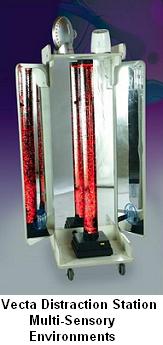Blog Roll: (Contributors)
» Hulet Smith, OT
» Megan Smith, PT
» Mike Price, OT
Topics:
Adaptive Devices
Adult Tricycles
Air Purifier
Allergy
Alternative Communication Devices
Alzheimer's Dementia Products
Aquatic Products
Arthritis Relief Products
Autism
Back Relief
Ball Pit/Pool
Bariatric
Bath Benches
Bathtub Lift
Bed Rails
Bedsores / Decubitus
Bidet
Body Solid Exercise Products
Breast Feeding Products
Bushel Trucks
Cancer
Catheters
CEU
Changing Bench
Child Car Seats
Child Care Products
Christmas Gifts
Clinic/Medical Equipment
Clinical Furniture
Cold and Flu
Communication Devices
Compression Garments
Computer Products
CPAP
Crutches
Daily Assistance Products
Daylight Lamps
Dental Care
Diabetes
Doctor's Office
Dysphagia
Electrodes
Electrolarynx
Emergency Preparedness
Ergonomic Equipment
Exam Tables
Exercise Products
Eyecare
Family Tricycles
First Aid Kits
Floor Scales
Fluidotherapy
Foot Drop
Foul Weather Gear
Furniture
Gait Trainers
General Articles
General Posts
Glassless Mirrors
Hand Sanitizer
Head Protection Helmets
Hearing Impaired
Heart Health
Heating Pad
Hip Fractures
Home Assistance Products
Home/Office Assistance
Hospital Beds
Hoyer Lifts
Hyperbaric chamber
Hyperthermia/Hypothermia
Ice/Hydration Carts
Impotence Products
Incontinence Products
Infection Control Gowns
Inspirational Stories
Lift Chairs
Light Therapy
Low Vision Products
Massage Tables & Chairs
Massage Units
Maternity
Medical Facility Products
Medical Scales
Multi-Sensory Environment
Natural Healing
Nebulizers
Non-Hospital Bedding
Nutritional Supplements
Office Furniture
One-Handed Products
Operating Room Devices
Ostomy Products
Oxygen Compressors
Oxygen Concentrator
Oxygen/Nebulizer Masks
Pain Relief
Paraffin Unit
Patient Lift
Patient Lifts
Patient Restraints
Patient Transfer Systems
Pediatric Bath Chairs
Pediatric Furniture
Pediatric Learning
Pediatric Recreation
Personal Listening Devices
Personal Warming Products
Physical Therapy
Pill Organizers
Pillows
Playground Equipment
Pool Lifts
Press Releases
Procedure Chairs
Pulse Oximeter
Reading Assistance
Reference Materials
Rehab Equipment
Rehabmart News
Rehabmart Newsletter
Respiratory Health
Rollators
Saunas
Scooters
Seniors
Shower Chairs
Shower Commode Chairs
Shower Gurney
Showers Chairs
Side Access Bathtubs
Skin Tear
Special Needs Dinnerware
Special Needs Seating
Special Report Articles
Splints
Sport Injuries
Standers
Staying Home
Stethoscopes
Stimulus Reward Toys
Stress Relief
Stroke
Strollers
Summertime Products and Summertime Fun
Talking Products
Therapy Balls
TheraTogs
Thermometers
Traction Devices & Tables
Treatment Tables
Ultrasound
Vibroacoustic Therapy
Vision Products
Walk-In Bathtub
Walking Aids
Walking Boot
Weighted Wearables
Wheelchair Accessories
Wheelchair Cushions
Wheelchair Lifts
Wheelchair Ramps
Wheelchair Transfer Systems
Wheelchairs
Women's Health
Work Hardening Products
Wound Care
Vecta Distraction Station Multi-Sensory Environments
Vecta Distraction Station Multi-Sensory Environments
The use of multi sensory environments to maximize focus and facilitate desirable adaptive response is gaining in popularity as a first line therapeutic tool for those with challenging behaviors or conditions, as well as those who realize the meditative benefits of distraction devices. Multi-sensory environments such as the Vecta Distraction Station Multi-Sensory Environment which is offered by Rehabmart can enhance a plethora of individual and group scenarios. New, innovative devices such as the Vecta Distraction Station Multi-Sensory Environment allows any facility; personal residences, hospitals, extended care facility, schools, nursing homes, assisted living, etc. - to create a multi-sensory environment

The Vecta Distraction Station Multi-Sensory Environment offers many options for controlled sensory input such as bubble columns, aroma fans, projection, fiber optic lights, and sound sensitive models. Many models offer tactile and remote interactive features so that the multi-sensory environments may be controlled or manipulated by either a teacher or the subject. These multi-sensory environments are durable and cool to the touch. Additional options include a vibration option, ping pong inserts, storage cabinets and more. As you can see, the Vecta Distraction Station Multi-Sensory Environment may be customized to target the specific needs of an individual or for the larger needs of a group application.
Whether for 'de-stressing', promoting focus, facilitating learning or therapy, the Vecta Distraction Station Multi-Sensory Environment series of products provide a variety of options that allow for tailored configurations to specific needs or applications. For example, the Vecta Distraction Station is ideal where space is at a premium, such as hospitals and nursing homes. It can convert waiting rooms, treatment rooms, and bedrooms into relaxing, distracting and empowering multi-sensory environments full of stimulation, and it is easily transportable from one room to another.
